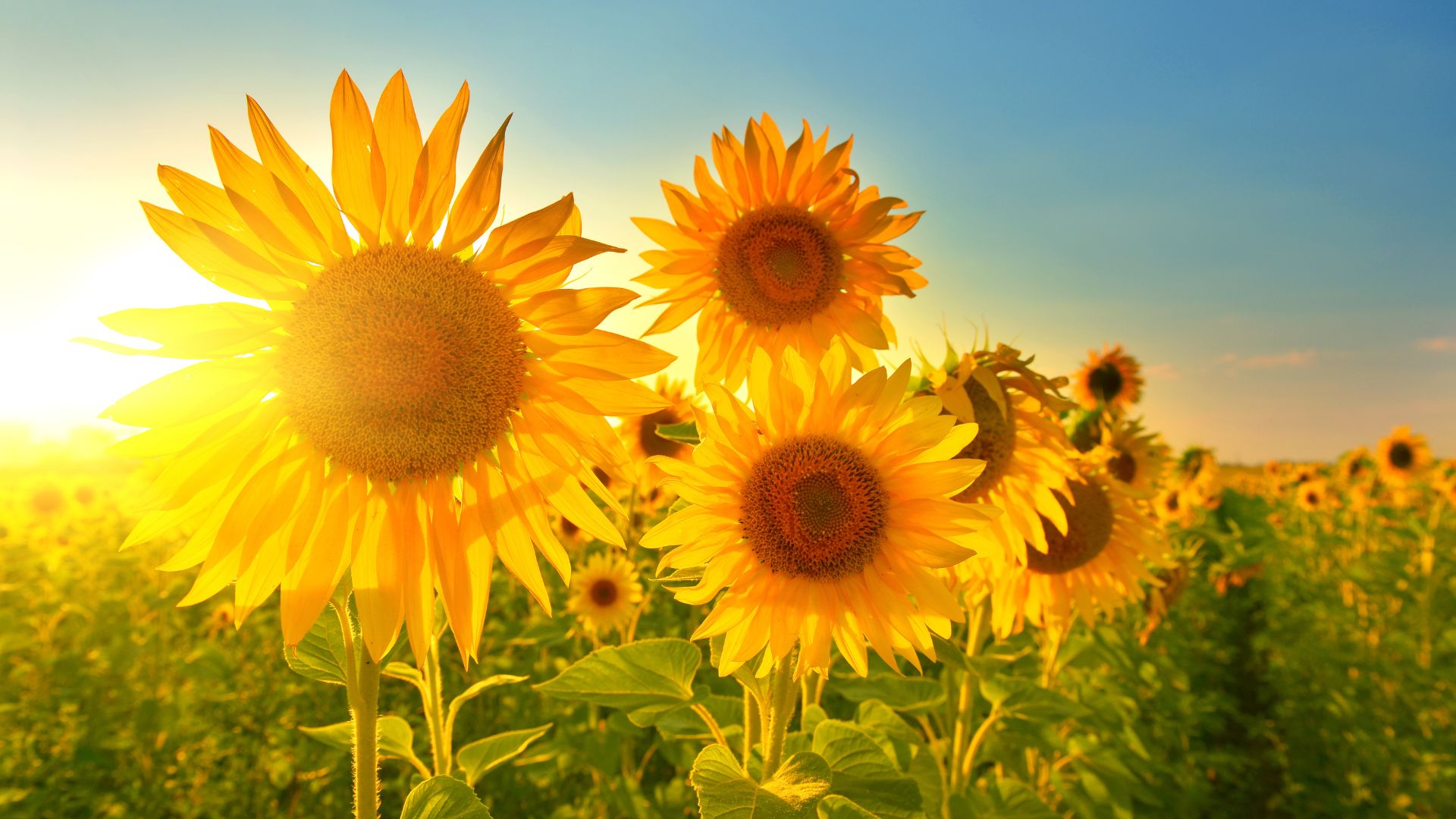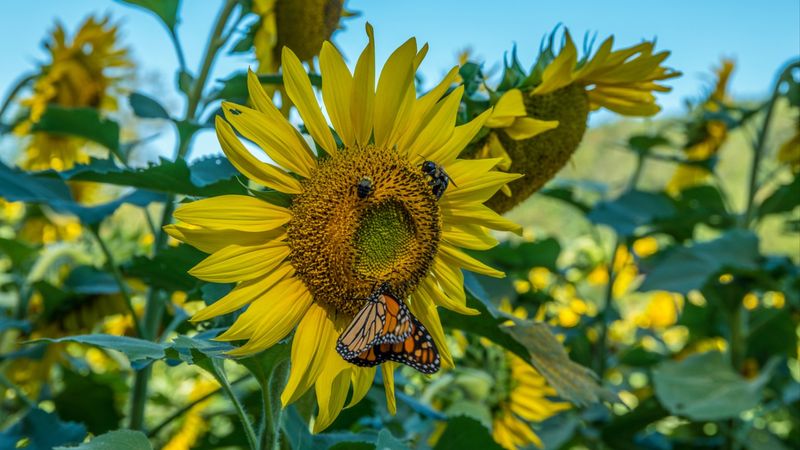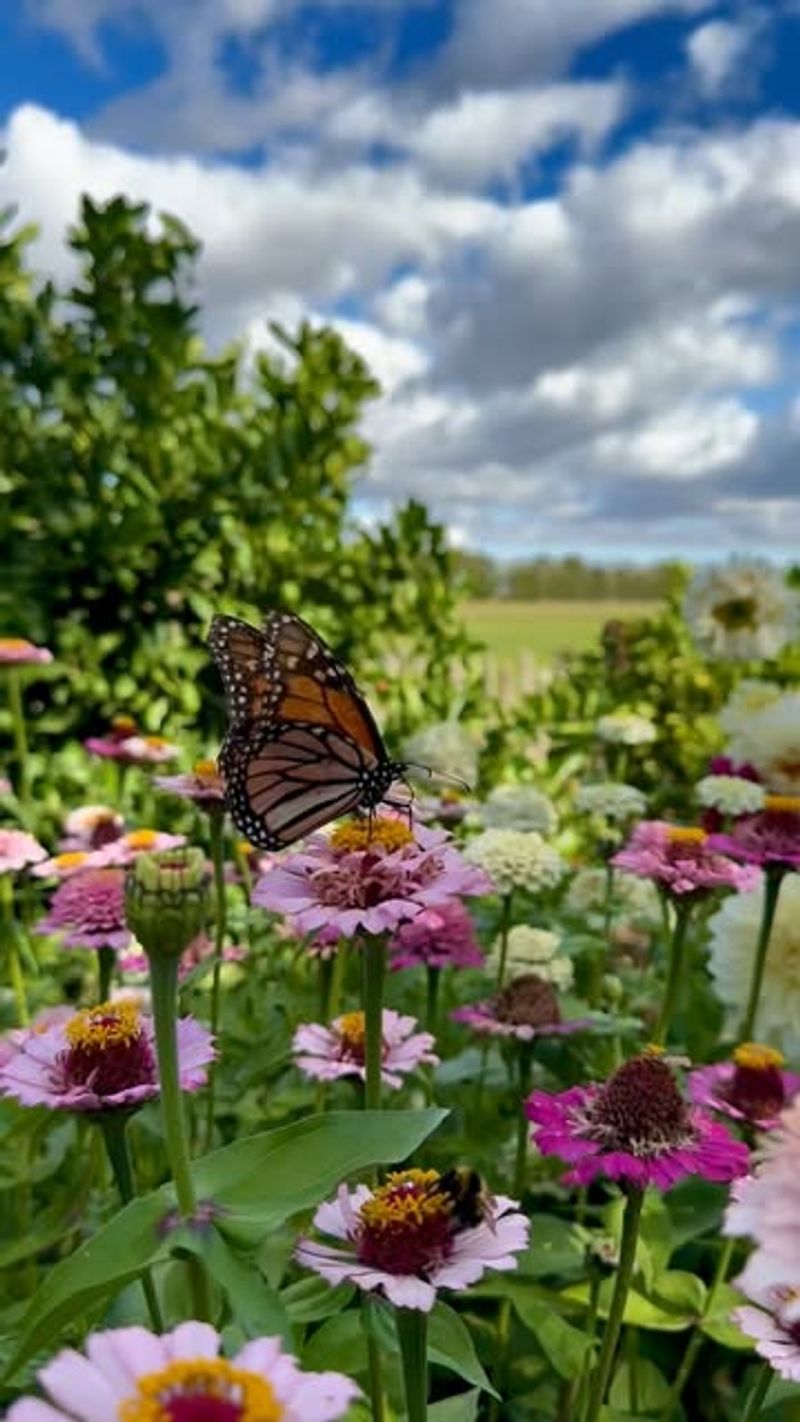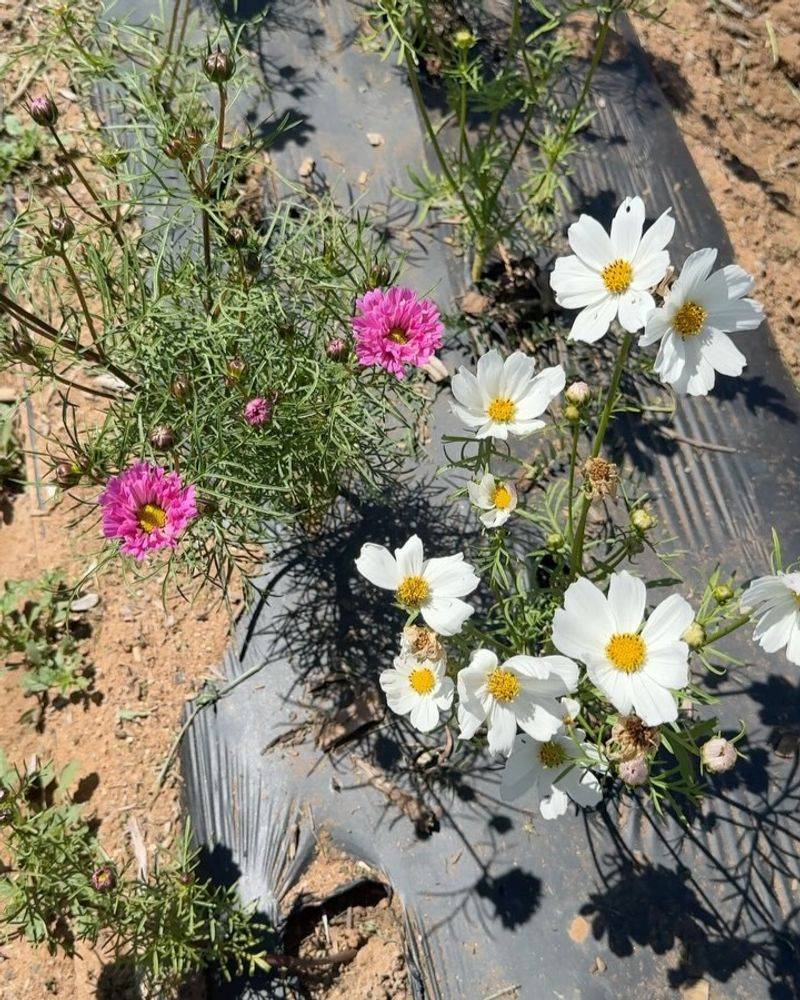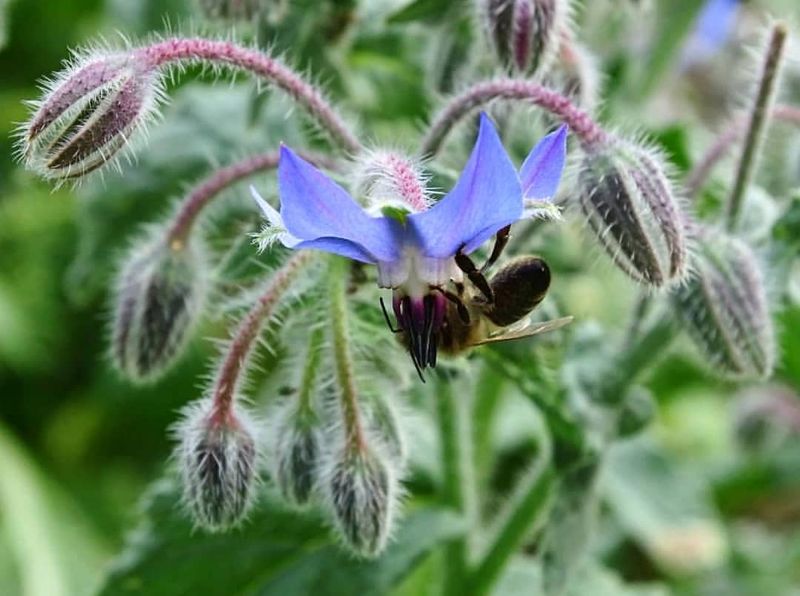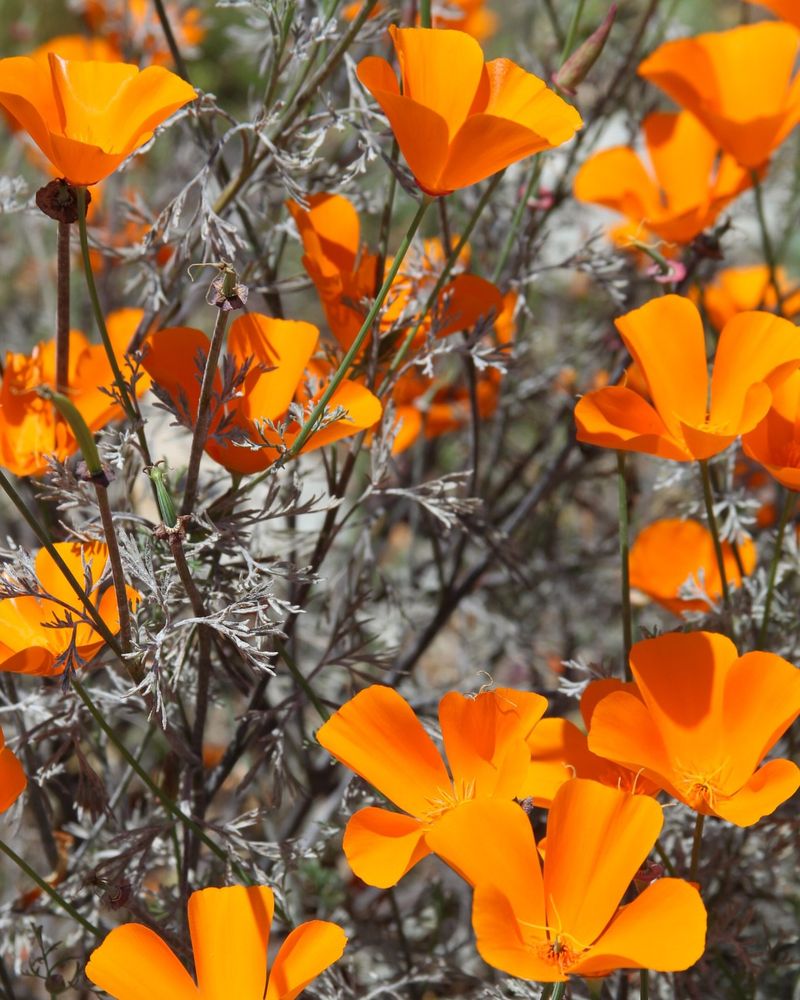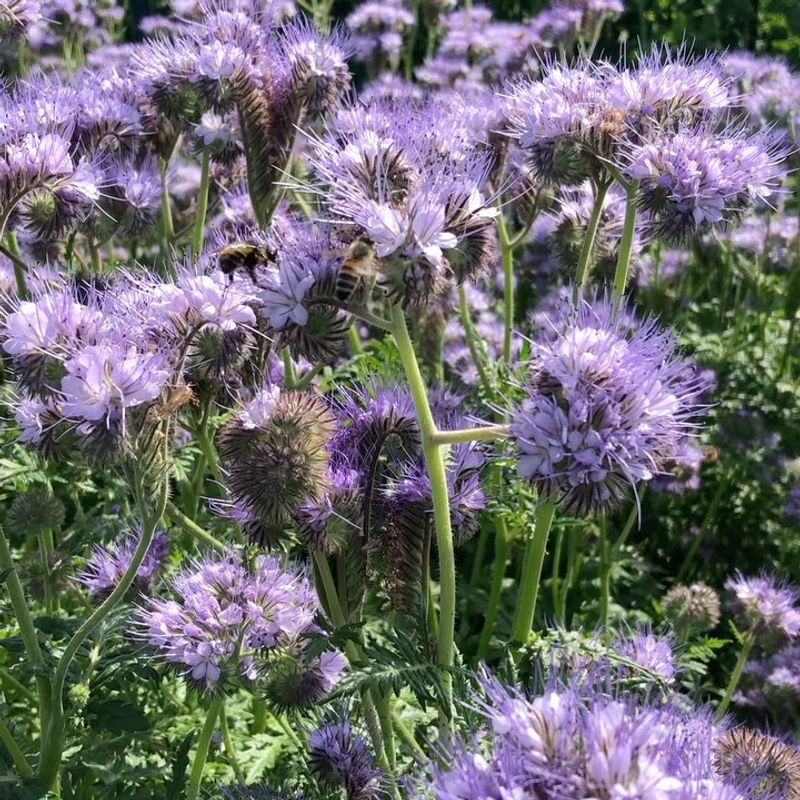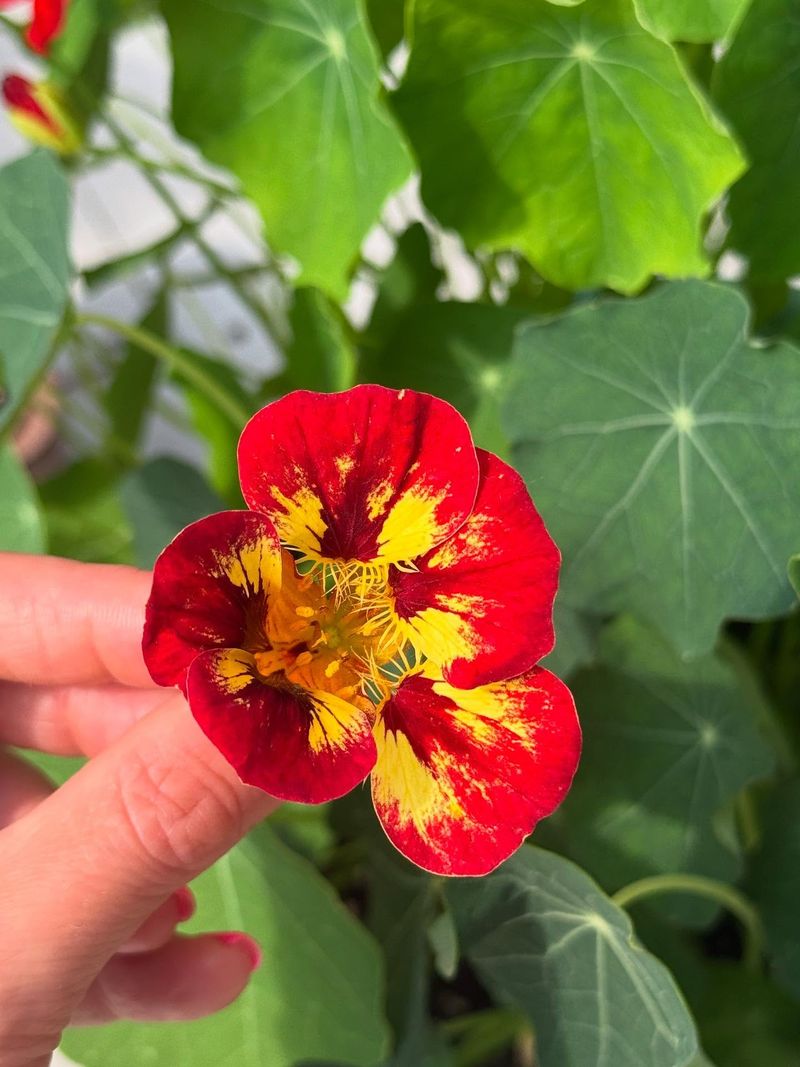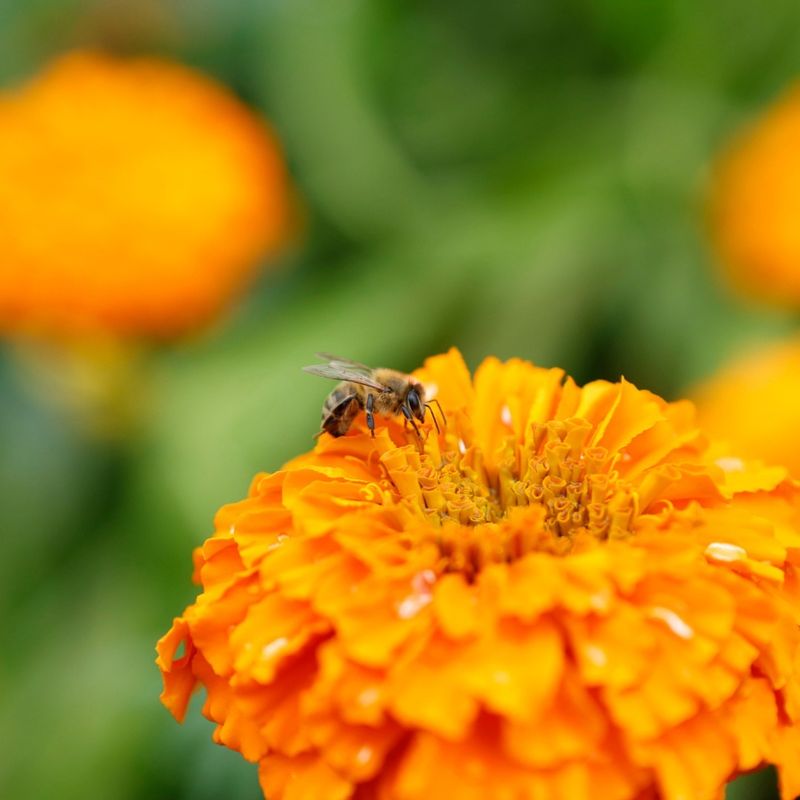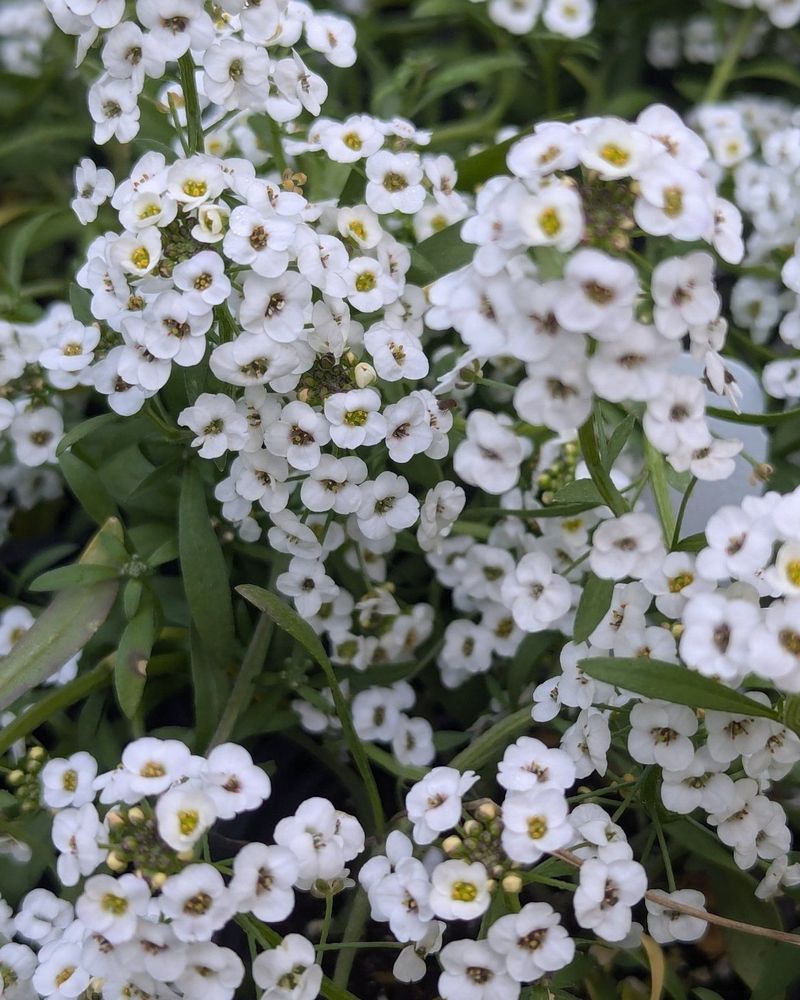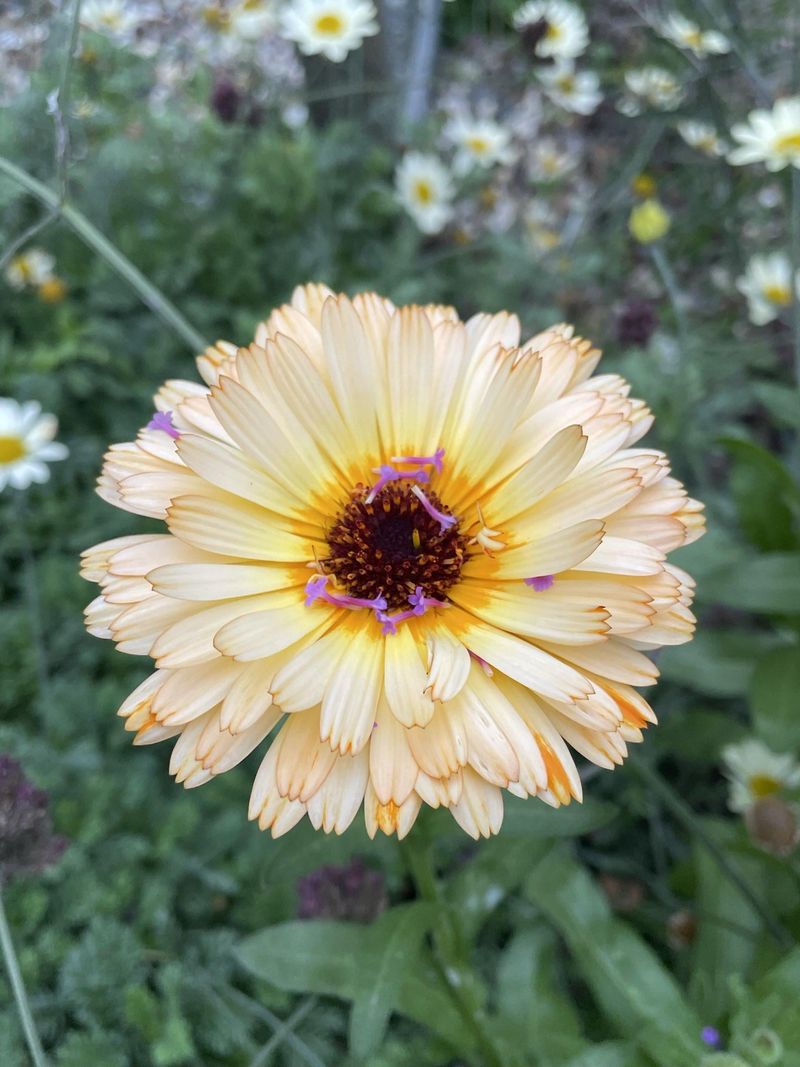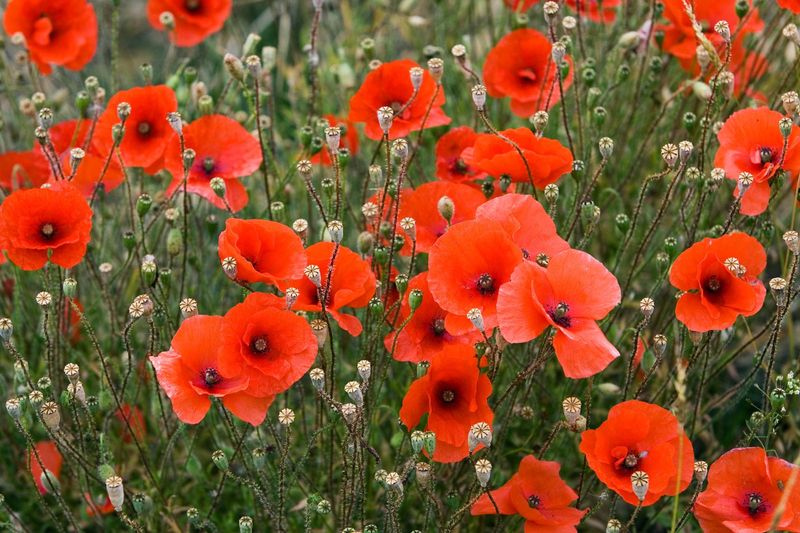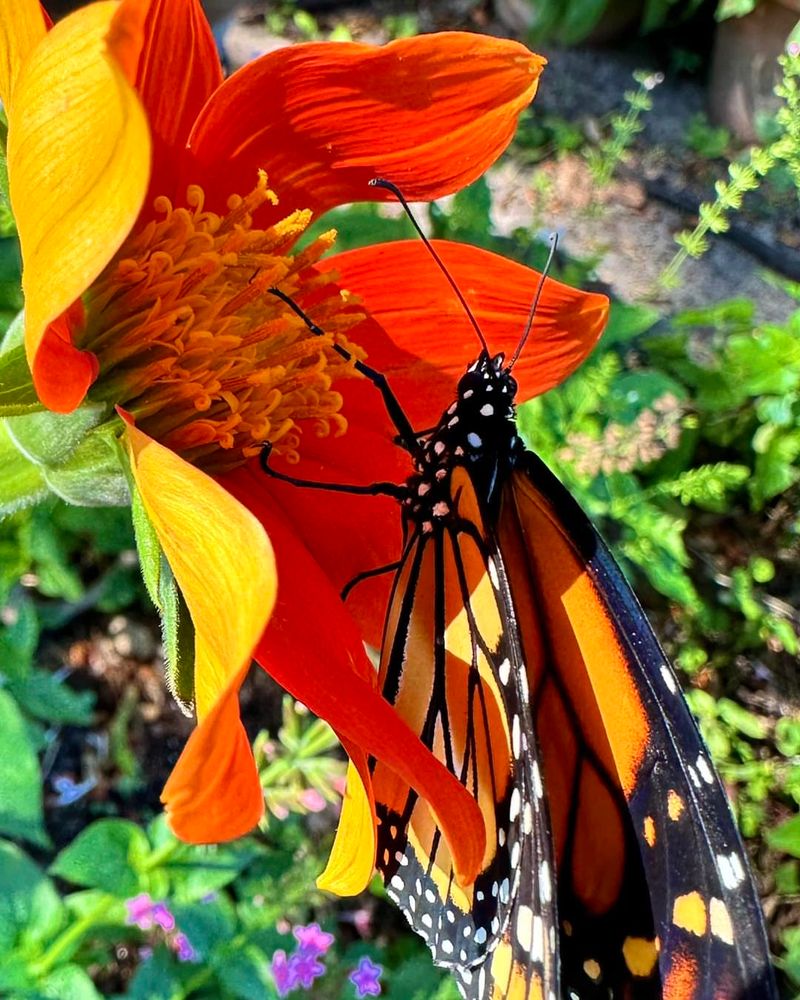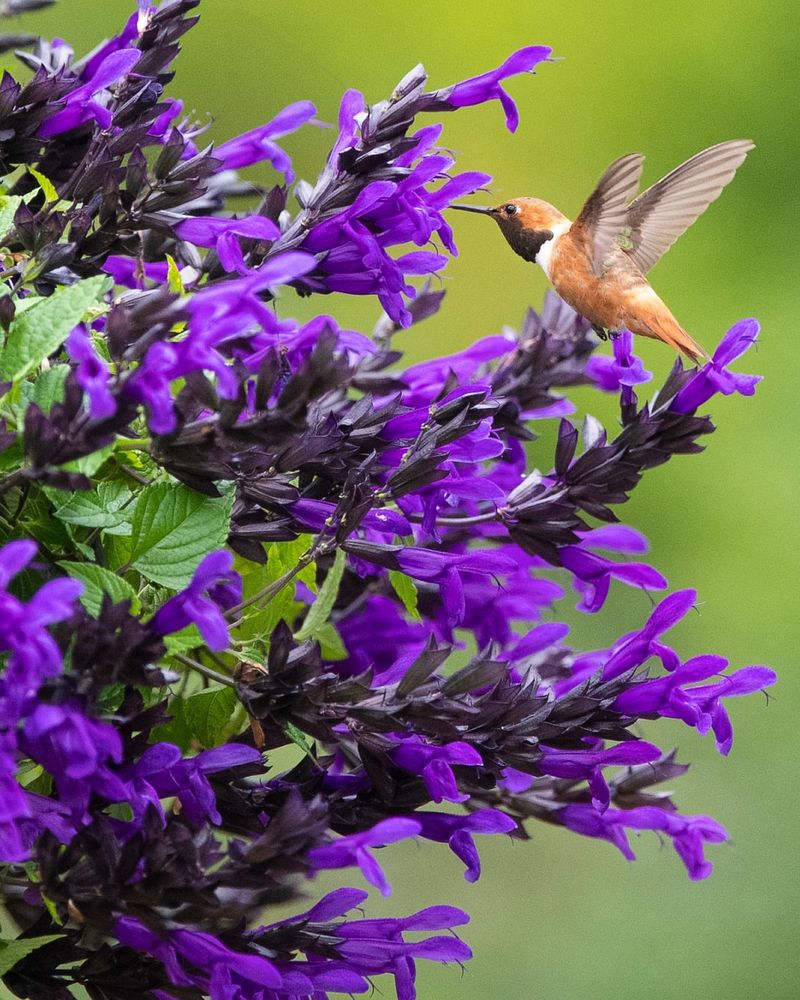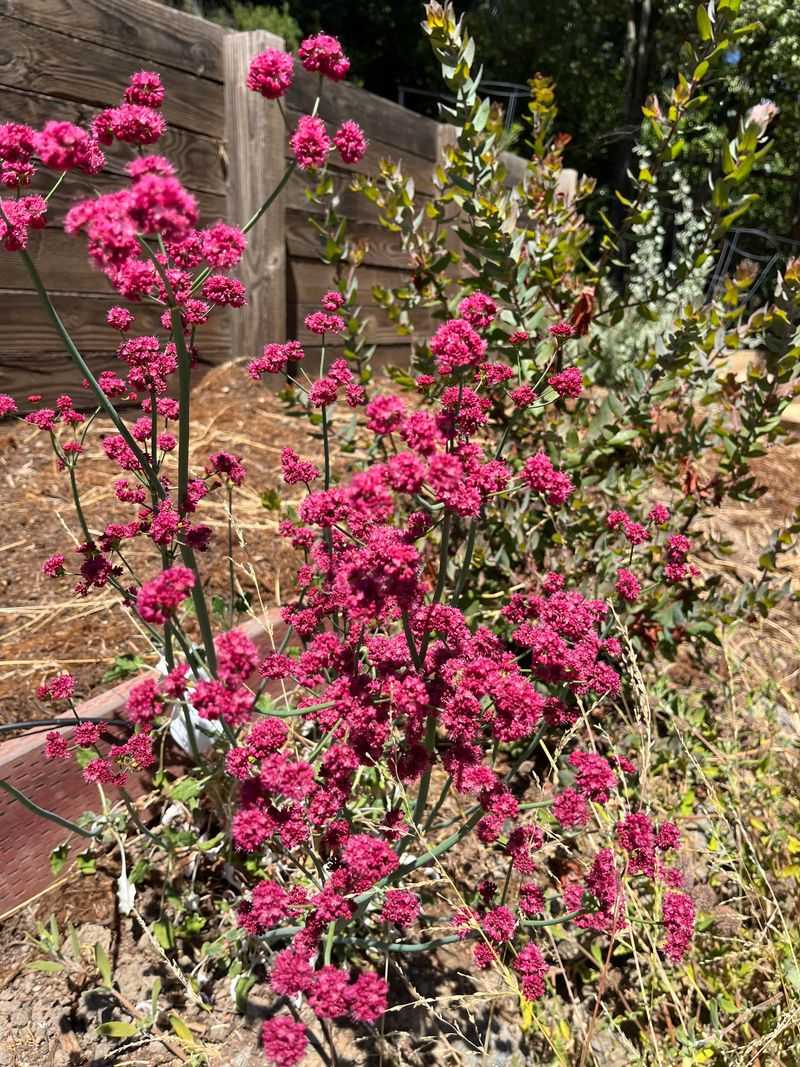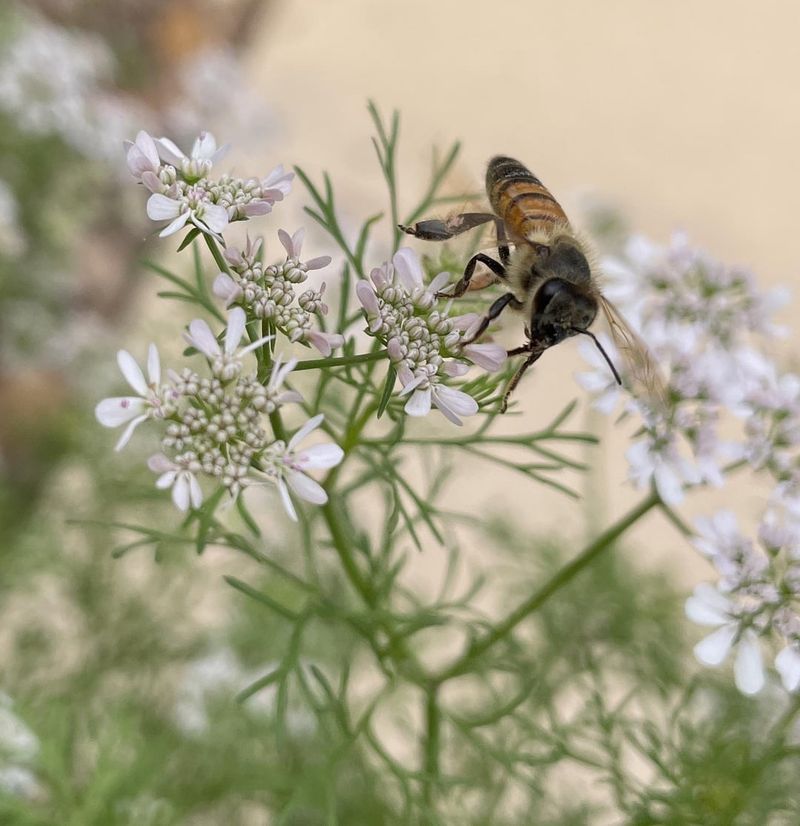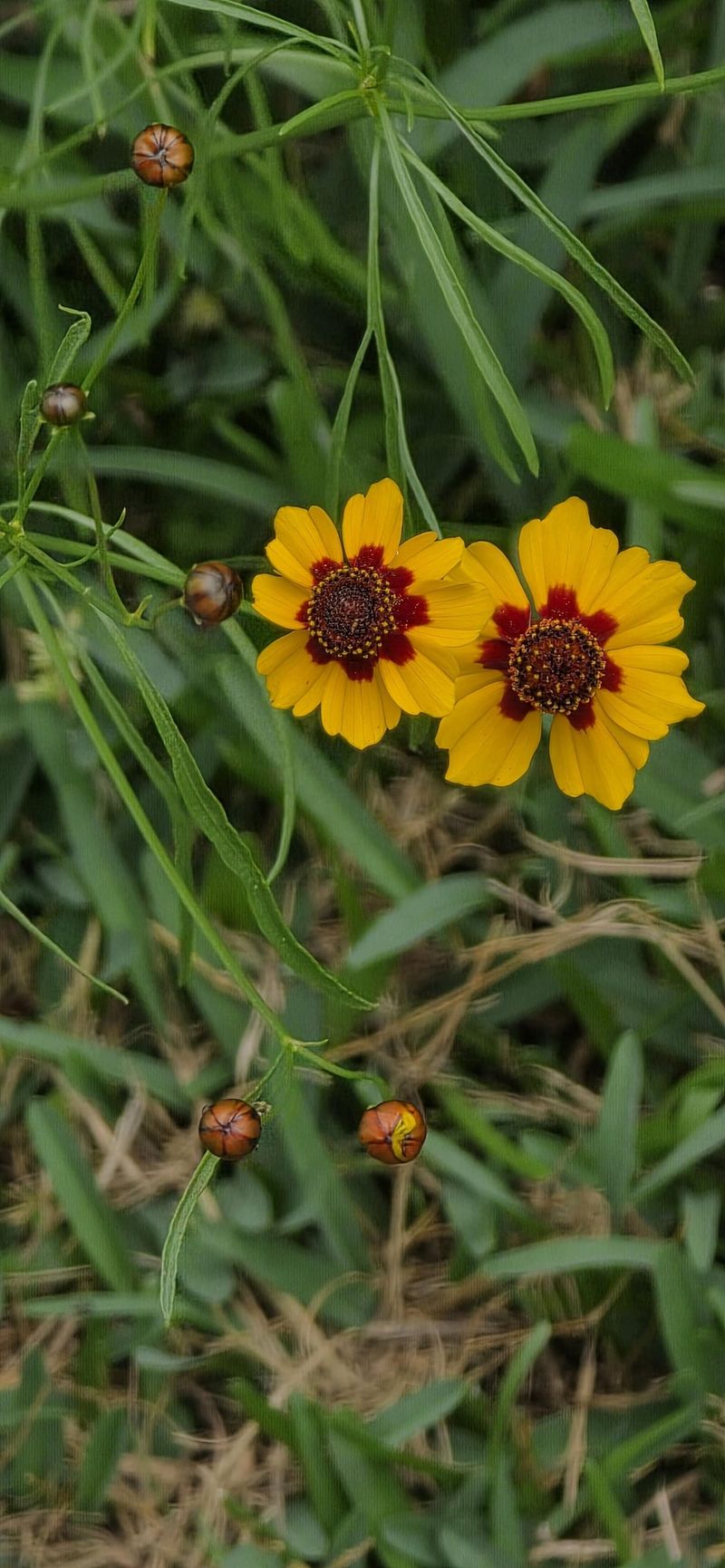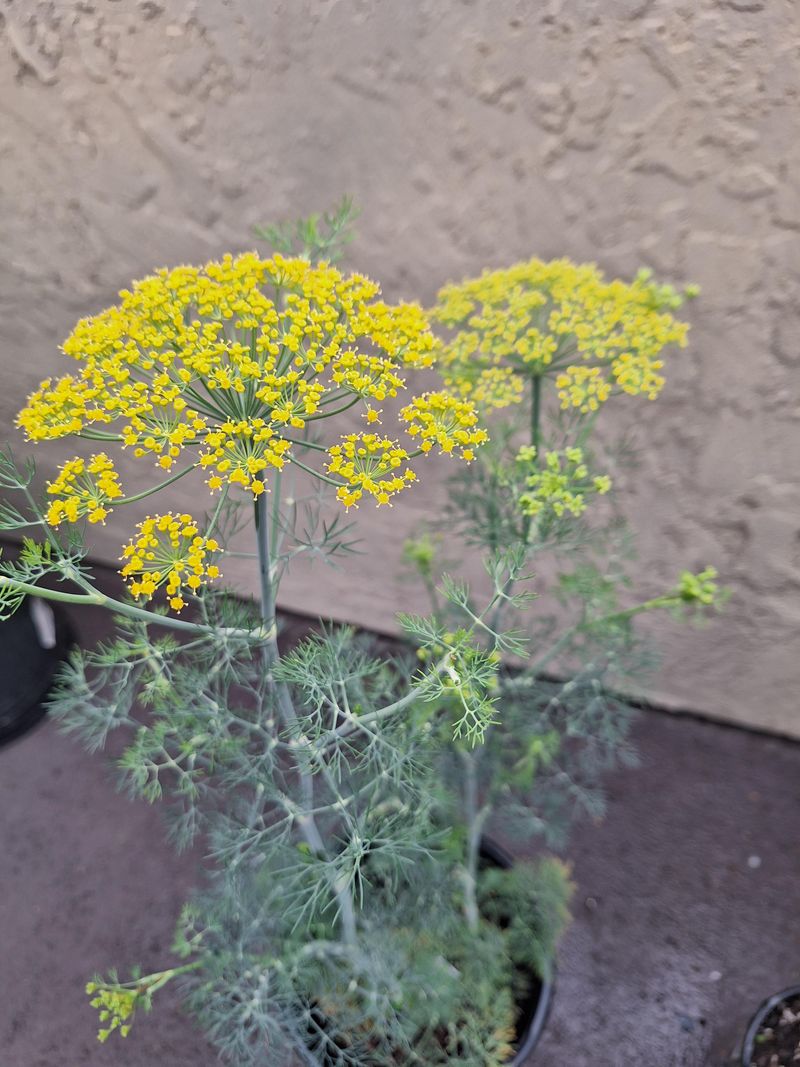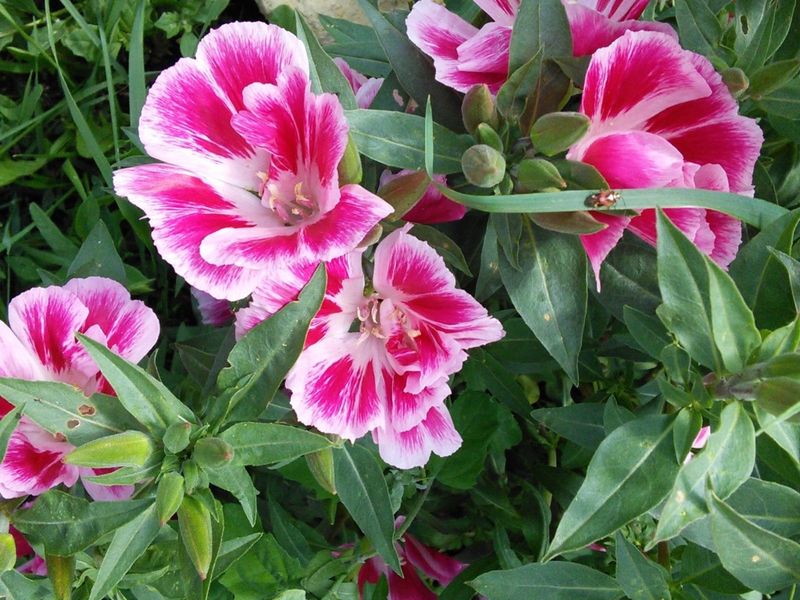Turning your garden into a pollinator paradise doesn’t mean hours of work or expert-level skills. With the right mix of fast-growing flowers, you can attract bees, butterflies, and hummingbirds in no time—and enjoy a burst of color while you’re at it.
Options like cosmos, zinnias, and sunflowers sprout quickly and start blooming within weeks. These floral favorites are loaded with nectar and pollen, creating a vibrant ecosystem that keeps your garden lively all season long.
Just scatter the seeds, water regularly, and skip the pesticides. Nature will do the rest—bringing you a buzz of activity and a garden that feels alive with every flutter and hum.
1. Sunflowers: The Towering Bee Magnets
Sprouting in just 7-10 days, sunflowers race toward the sky and can bloom within 60 days of planting. Simply press seeds an inch deep in full sun after frost danger passes.
Bees absolutely swarm to the massive flower heads, which contain thousands of tiny florets. Each floret offers a nectar reward, making one sunflower equivalent to an entire pollinator buffet.
I’ve noticed goldfinches hanging upside-down from the seedheads in late summer, getting a meal while the bees work the fresh blooms nearby.
2. Zinnias: Rainbow-Colored Butterfly Bars
Scatter zinnia seeds directly in warm soil, and within 4-7 days they’ll sprout. These tough flowers don’t mind heat or drought once established, making them perfect for beginners.
Butterflies can’t resist their flat landing pads and abundant nectar. The more you cut zinnias for bouquets, the more they branch and bloom, creating an endless butterfly feast.
Last summer I planted a mix of colors and heights, creating a zinnia jungle that stayed alive with monarchs and swallowtails until the first frost.
3. Cosmos: Delicate Dancers That Thrive On Neglect
These airy flowers germinate in just 5-7 days and flourish in poor soil. In fact, rich soil produces fewer blooms and floppy stems, so skip the fertilizer completely.
Cosmos attract a diverse pollinator crowd—bees, butterflies, and even tiny beneficial wasps flock to their simple, open flowers. The feathery foliage adds texture while taking up minimal ground space.
For me, cosmos have self-seeded so effectively that I haven’t bought seeds in years. They pop up in new spots each spring, creating surprise pollinator stations throughout my garden.
4. Borage: The Blue Star Bee Favorite
Borage germinates quickly and produces hanging clusters of star-shaped blue flowers within 8 weeks. The entire plant, including the cucumber-flavored leaves, is edible and makes a unique addition to summer drinks.
Bumblebees particularly love borage, often visiting the same plant repeatedly throughout the day. The downward-facing flowers protect nectar from rain, ensuring bees always find a reward.
Once you plant borage, you’ll have it forever—not because it’s invasive, but because bees spread the seeds while they work. Free plants year after year!
5. California Poppies: Golden Drought-Fighters
Scatter these seeds in fall or early spring and watch them bloom within 60 days. Their tap roots dive deep, finding water sources other plants miss, which means minimal watering for you.
Native bees and honeybees busily collect pollen from the cup-shaped blooms, especially in morning hours. The golden-orange color actually guides pollinators to the center, working like runway lights at an airport.
My California poppies survived a three-week drought last summer while everything else wilted. They just kept blooming, keeping the bees fed during a tough time.
6. Phacelia: The Pollinator Powerhouse You’ve Never Heard Of
Sometimes called bee’s friend, phacelia produces curved flower spikes covered in purple-blue blooms just 6-8 weeks after planting. Farmers use it as a cover crop specifically to support beneficial insects.
A single phacelia plant can attract more pollinators than almost any other flower in your garden. The distinctive curled flower heads unfurl as they bloom, continuously offering fresh nectar sources.
The buzzing around my phacelia patch gets so loud sometimes I can hear it from across the yard. It’s like having a tiny bee concert every afternoon.
7. Nasturtiums: Edible Beauties For Busy Gardeners
Soak the large seeds overnight, plant them knuckle-deep, and they’ll sprout within a week. Both the round leaves and spicy flowers are edible, making nasturtiums a garden multi-tasker.
Hummingbirds dive into the trumpet-shaped blooms for nectar, while bees collect pollen from the prominent stamens. The trailing varieties create living mulch, keeping soil cool for earthworms and beneficial insects.
After trying several varieties, I’ve found the ‘Jewel Mix’ produces the most flowers with the least care—perfect for adding color to my vegetable garden edges.
8. Bachelor’s Buttons: The No-Fail Blue Bloomers
These reliable flowers germinate even in cool soil, often blooming just 8 weeks after planting. Their true-blue color is rare in the garden world, making them standout additions to any pollinator patch.
Bees and butterflies gather around the fringed flower heads, which offer accessible nectar even to insects with shorter proboscises. The more you cut them for bouquets, the more side branches and blooms they produce.
Bachelor’s buttons were the first flowers I ever grew from seed, and they’re still in my garden twenty years later. Some traditions are worth keeping.
9. Marigolds: Pest-Repelling Pollinator Protectors
From seed to bloom in just 8 weeks, marigolds provide constant color until frost. Their distinctive scent repels many garden pests while attracting beneficial insects that hunt aphids and other troublemakers.
Bees work marigold blooms for pollen rather than nectar, collecting the protein-rich dust on their leg baskets. The taller African varieties attract more pollinators than the compact French types.
Planting marigolds between tomato plants has saved my harvest from hornworms twice now. The hornworm-hunting wasps come for the flowers but stay to remove the pests!
10. Sweet Alyssum: The Tiny Flower With Huge Impact
Sprinkle these tiny seeds on soil surface, keep moist, and they’ll germinate in just 4 days. By week 6, you’ll have a carpet of fragrant white, purple, or pink blooms that release honey-like scent.
Tiny parasitic wasps that control aphids and caterpillars depend on alyssum’s small flowers for nectar. These beneficial insects are too small to access larger blooms, making alyssum their perfect refueling station.
A border of alyssum around my vegetable beds has dramatically reduced pest problems. Nature’s pest control works better than any spray I’ve tried.
11. Calendula: The Medicinal Sunshine Maker
Calendula seeds sprout in cool soil, often emerging within 5-7 days even in early spring. Their edible petals brighten salads while their resin has skin-healing properties used in natural remedies.
Early-season pollinators depend on calendula when few other flowers are blooming. The open, daisy-like structure makes pollen and nectar accessible to bees with different tongue lengths and body sizes.
During an unusually cold spring, my calendulas were the only things flowering in the garden. The bumblebee queens found them immediately, gathering crucial energy after winter hibernation.
12. Poppies: One-Day Wonders Worth The Wait
Annual poppies need cold to germinate, so scatter seeds in late fall or winter. The delicate blooms last just one day each, but plants produce dozens of flower buds over several weeks.
Pollen-collecting bees visit at dawn when the anthers are fresh and covered in protein-rich dust. Female bees gather this pollen to feed their developing larvae back in the nest.
The sound of bees literally buzzing inside poppy flowers as they collect pollen is one of my favorite early summer garden moments. They emerge completely covered in blue-black pollen dust.
13. Mexican Sunflower (Tithonia): The Butterfly Magnet
Starting from seed after frost danger, these grow into 4-6 foot towers of orange blooms within 12 weeks. Unlike demanding garden plants, tithonia thrives in poor soil and hot conditions where other flowers struggle.
Monarchs and swallowtails fight for landing spots on the velvety orange blooms. The flat flower shape provides perfect perches for butterflies to rest while sipping nectar.
Watching five different butterfly species on one tithonia plant last August convinced me to double my planting this year. No other flower in my garden attracts such butterfly diversity.
14. Salvia: Hummingbird Highways In Weeks
Annual salvias like ‘Victoria Blue’ sprout within 10 days and produce spikes of tubular flowers by mid-summer. Their long bloom period extends well into fall, providing nectar when many other plants have finished.
Hummingbirds zip from flower to flower, perfectly adapted to access nectar in the tubular blooms. Their long beaks and tongues reach deep inside where insect pollinators can’t access.
The first hummingbird of the season always finds my salvia patch within hours of the first flowers opening. How they locate these blooms so quickly remains one of gardening’s delightful mysteries.
15. Buckwheat: The 30-Day Wonder Cover Crop
This fast-growing plant produces tiny white flowers just 30 days after seeding, making it perfect for filling garden gaps. Farmers use buckwheat to improve soil while supporting beneficial insects between main crops.
Honeybees make distinctive dark honey from buckwheat nectar, while native bees, flies, and wasps visit in droves. One square foot of buckwheat can support hundreds of pollinator visits daily.
After clearing spring vegetables, I broadcast buckwheat seeds over the bare soil. Three weeks later, the humming pollinator cloud above the patch told me it was working perfectly.
16. Cilantro: The Herb That Feeds More Than Your Kitchen
Let cilantro bolt instead of pulling it when temperatures rise. The lacy white flowers appear just 2-3 weeks after the herb gets leggy, attracting beneficial insects that control garden pests.
Tiny parasitic wasps that target cabbage worms and aphids depend on cilantro flowers. These beneficial insects are too small to access larger blooms, making cilantro their perfect refueling station.
Cilantro flowers have saved my broccoli from destruction multiple times. The tiny wasps they attract lay eggs on cabbage worm caterpillars, naturally controlling these common brassica pests.
17. Plains Coreopsis: Native Beauty For Every Garden
Seeds sprout within a week and produce masses of yellow-and-red blooms just 50-55 days later. This native wildflower tolerates poor soil and drought once established, asking almost nothing from gardeners.
Small native bees specially evolved to collect pollen from coreopsis visit these flowers repeatedly. The distinctive bull’s-eye pattern acts as a landing guide, directing pollinators straight to the nectar and pollen.
A patch of coreopsis survived complete neglect during my two-week vacation last summer. They were still blooming when everything else had given up from lack of water.
18. Dill: The Butterfly Nursery Herb
Dill seeds sprout within 10 days and quickly develop into feathery plants topped with yellow flower umbels. Allow some herbs to flower instead of harvesting all the leaves for a dual-purpose garden plant.
Swallowtail butterflies lay eggs on dill foliage, providing food for their caterpillars. Meanwhile, the flowers attract adult butterflies, bees, and beneficial predatory insects like lacewings and ladybugs.
Finding tiny swallowtail eggs on my dill was more exciting than any harvest. Watching the caterpillars grow and eventually form chrysalises turned my herb garden into a living science lesson.
19. Clarkia: The Shade-Tolerant Surprise
Unlike most quick-blooming flowers that demand full sun, clarkia performs beautifully in partial shade. Seeds sprout in 7-14 days and produce cup-shaped pink, purple, or white blooms within 60 days.
Native bees are particularly attracted to clarkia’s pollen-rich anthers. The flowers stay open even on cloudy days when many other blooms close, providing reliable pollinator food regardless of weather.
The north side of my fence was a pollinator desert until I discovered clarkia. Now that previously barren area buzzes with activity from spring through summer.

